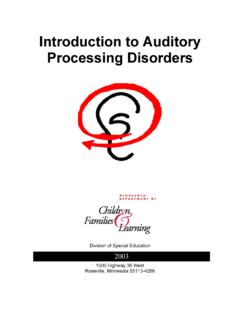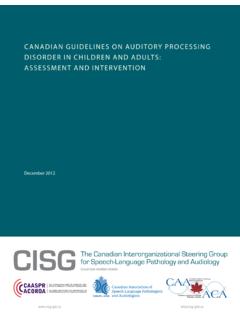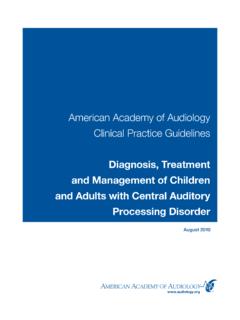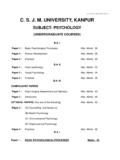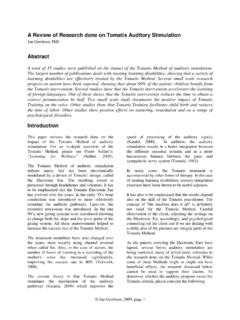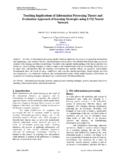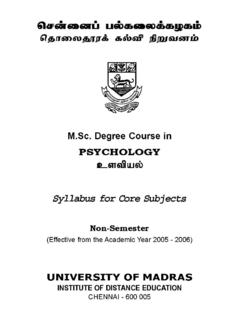Transcription of The Brain, Prosody, and Reading Fluency
1 (Published intheNational Association of Special Education Teachers(NASET),The Practical Teacher, February 2011)The brain , prosody , and Reading FluencyMatthew J. Glavach, good news is that the brain is plastic, or changeable, throughout one s entire intervention is easier when students are younger, yet with proper interventions,even older struggling readers can become proficient readers. Several strategies helpteachers accomplish Reading intervention. The brain , prosody , and Reading Fluency author, Matthew J. Glavach, , presents a Reading Fluency Reading Fluency StrategyThe Reading Fluency strategy includes two strategies: phrase-cued Reading instruction forcomprehension and phonological processing instruction for Reading speed andcomprehension. While both strategies interact, in this article they are presented as twostrategies: (Strategy 1) phrase-cued Reading for practicing prosody and (Strategy 2)repeated Reading for fast phonological processing. For teachers with Reading fluencyexperience, the author has added some features which have had positive results forstudents with Reading difficulties, including certain auditory processing disorders.
2 Forteachers new to Reading Fluency the author has outlined instruction steps and providedinstruction brain and Reading FluencyReading Fluency is the ability of readers to read quickly, effortlessly, and efficiently withgood meaningful Reading Fluency is about how accuracy, rate, and prosodywork together to comprise fluent Reading . For most people the left side of the brain dealswith language, while the right side handles rhythm, intonation, and patterns of languagewhich make up prosody . The brain does its best work when both sides of the braincommunicate brain and ProsodyIn studies, researchers have found that eighty percent of language-impaired students hadauditory cortex neurons that were firing too slowly; therefore, they lost largeamounts oflanguage information. Also, these students could have problems hearing changes in pitchand not grasp speech inflections, the emotional part of speech, Reading develops prosody . Although lack of word recognition abilitiesinstudents can lend itself to Reading difficulties, poorly developed skills in prosody orphrasing can also prevent students from fluent Reading comprehension.
3 Phrase-cuedreading is an effective intervention strategy for improving students phrasing abilities, prosody , and Fluency Strategy 1: Phrase-Cued ReadingTeachers develop phrase-cued text passages. A phrase-cued text is a written passage thatis divided according to natural pauses that occur in and between sentences. The phrasepauses help students whose Reading lacks prosody . Also, they help students who havedifficulty grouping words that go together. Although phrase-cueing text can be done indifferent ways, teachers simply read the text and mark the natural phrases use authentic text with no more than 100 to 250 words. For younger studentsthe text should be much shorter. Teachers make a copy of the text and prepare it withphrase marks, or slash marks. One slash mark, / can be used between phrases. Twoslash marks, // , can be used between As teachers read the text they add theslash marks based on expression and phrasing they hear as they refer toexample 1**Diver attacked by great whiteAssociated PressMonterey, / California / An experienced diver / who came face to face / with a greatwhite shark / was bitten three times / but swam to his boat / and escaped.
4 //The diver was bitten / on the right shoulder, / thigh, and torso. / He was released from thehospital Saturday, / a day after the attack. // He s a lucky guy, / park ranger Jerry Loomis said, / and brave, too. //Among other attacks, / in 1986, a man needed more than 600 stitches / after a sharkattack / off the Monterey coast. // Four years later, / a woman was bitten / on the Both survived the attacks, / which were blamed on great whites. //-Glavach and Associates, 2004**Before beginning Reading Fluency Strategy 1: Phrase-Cued Reading , teachers explain tostudents the importance of Reading with expression. They tell them that a way to practicereading with expression is to read the text in parts, or chunks. By Reading aloud withexpression, teachers provide a model for Teachers give each student a copy of the phrase-cued Teachers read the text to the students with expression emphasizing the phrases. Thefirst time teachers read the text at a slower pace (but not so slow as to lackexpression)because many problem readers have slow auditory processing andauditorydiscrimination problems.
5 According to Dr. Paula Tallal: Many, but notall,students who are struggling with both oral and written language are Teachers have students follow the text by tracking under the text with theirdominanthands. Tracking is important because it addresses auditory and visualpacingproblems. (Students vision and hearing are not synchronized.) Tracking trainstheeye, hand, and ear and insures that students are actively processing the Teachers read the text at a normal pace with expression and have studentscontinuetracking under the text with their dominant Students read the text with partners or Teachers discuss the meaning of the text with the assess the phrase-cued text Reading by observing students oral Reading and their discussion and answers toquestions about the Fluency Strategy 2: Rapid Reading for Fast PhonologicalProcessingRapid Reading and rereading of text is an excellent way to develop Fluency . Phonologicalprocessing is a component of the brain s processing rate.
6 Students who cannot quicklyand accurately perform phonological processing will not be able to read fluently. As lessattention is required for decoding, more becomes available for comprehension. Thus,repeated rereading builds Fluency and enhances the last session, teachers have students do a timed readingfor speed and a finalreading for expression. The timed Reading for speed is highly motivational for studentsespecially if they keep a graph of their scores. Teachers make a chart graph and havestudents fill in their Reading Teachers provide each student with a copy of the original text without Teachers read the text at a normal pace with expression and have studentscontinuetracking under the text with their dominant hands. (A technique to checkthatstudents are following the text is for teachers to stop at different times whilereadingand ask a student the next word.) read the text with partners or teachers. Students read for one minuteandcount the number of words read.
7 One point is subtracted for each refer to example 2 EXAMPLE 2**Diver attacked by great whiteAssociated PressMonterey, California An experienced diver who came face to face with a great whiteshark was bitten three times but swam to his boat and diver was bitten on the right shoulder, thigh, and torso. He was released from thehospital Saturday, a day after the attack. He s a lucky guy, park ranger Jerry Loomis said, and brave, too. Among other attacks,in 1986, a man needed more than 600 stitches after a shark attackoff the Monterey years later, a woman was bitten on the leg. Both survived the attacks, which wereblamed on great 1 _____ TIME 2_____ TIME 3_____~Glavach and Associates, 2004**Some researchers suggest that students should read the text with ninety-five percentaccuracy. The author of this article has found benefit for students when they have loweraccuracy levels. (The students will be repeating many of the words in the next readings.)The author has seen dramatic Reading progress with students using the special techniquespresented here, techniques not found in most research books but discovered while he wasworking with and observing students struggling to read and then finding has shown that having students engage in repeated Reading whilesimultaneously receiving the support of a fluent rendition results in improvedperformance, especially for The author has developed a readingfluency program with high interest news articles and audio support for students Reading atsecond through fourth grade Reading levels.
8 The program is entitled Reading the News forReading Fluency . Informationabout the program can be found , N. (2007). The brain that changes itself. New York, New York: Penguin BooksHeymann, (2010). The sound of hope. New York: Ballentine BooksRasinski, (2003). The fluent reader. New York, New York: ScholasticRasinski, (1994). Developing syntactic sensitivity in Reading through phrase cuedtexts. Intervention in School and Clinic, 29(3),165-168 National Association of Special Education Teachers. All rights reserv


